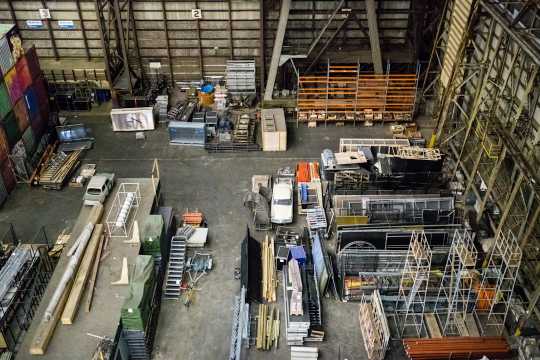The aerospace industry has always been at the forefront of innovation and technological advancement, and the future of aerospace manufacturing is no exception. With the rise of new technologies such as 3D printing, artificial intelligence, and automation, the way aircraft and spacecraft are designed and built is rapidly evolving.
One of the most exciting developments in aerospace manufacturing is the use of 3D printing, also known as additive manufacturing. This technology allows engineers to create complex parts and components with unprecedented precision and speed. By building up layers of material, rather than cutting away from a block of material as in traditional manufacturing methods, 3D printing opens up new possibilities for designing lighter, stronger, and more efficient aircraft and spacecraft.
In recent years, major aerospace companies such as Boeing and Airbus have begun incorporating 3D printing into their manufacturing processes. For example, Boeing’s 787 Dreamliner contains over 30 3D printed parts, including air ducts and brackets. In the future, we can expect to see even more 3D printed components in aircraft, leading to faster production times, lower costs, and more innovative designs.
Another key technology shaping the future of aerospace manufacturing is artificial intelligence (AI). AI systems have the potential to revolutionize the design and production of aircraft and spacecraft by analyzing massive amounts of data and identifying patterns and trends that human engineers might miss. AI algorithms can optimize the design of components, predict maintenance needs, and even help with quality control on the production line.
One area where AI is already making a big impact is in the field of autonomous drones. These unmanned aerial vehicles (UAVs) are increasingly being used for tasks such as aerial surveys, package delivery, and search and rescue missions. By using AI to analyze sensor data and make decisions in real time, autonomous drones can operate more efficiently and safely than their human-controlled counterparts.
Automation is another key trend in aerospace manufacturing that is set to transform the industry in the coming years. By using robots and other automated systems to perform repetitive or dangerous tasks, aerospace manufacturers can increase efficiency, improve precision, and reduce the risk of human error. For example, automated systems can be used to assemble components, apply coatings, and inspect finished products, leading to faster production times and higher quality standards.
In addition to 3D printing, AI, and automation, there are several other exciting technologies on the horizon that could have a major impact on the future of aerospace manufacturing. For example, advanced materials such as carbon fiber composites and ceramics are being developed that are stronger, lighter, and more heat-resistant than traditional metals. These materials could be used to create aircraft and spacecraft that are more fuel-efficient, durable, and environmentally friendly.
Another emerging technology that is set to revolutionize aerospace manufacturing is blockchain. This secure, decentralized ledger system has the potential to streamline supply chains, track the provenance of materials, and improve transparency and trustworthiness in the manufacturing process. By using blockchain technology, aerospace manufacturers can ensure that components are sourced ethically, adhere to industry standards, and are installed correctly.
As the aerospace industry continues to evolve, it is clear that collaboration between industry, academia, and government will be crucial to driving innovation and supporting the growth of the sector. By fostering partnerships and sharing knowledge and resources, aerospace manufacturers can stay ahead of the curve and continue to push the boundaries of what is possible in aircraft and spacecraft design and production.
In conclusion, the future of aerospace manufacturing is shaping up to be an exciting and dynamic field, driven by new technologies such as 3D printing, artificial intelligence, automation, advanced materials, and blockchain. By embracing these innovations and working together to overcome challenges, the aerospace industry is poised to make great strides in the coming years. From faster production times and lower costs to more efficient and sustainable aircraft and spacecraft, the possibilities are endless. The future of aerospace manufacturing is truly limitless.

